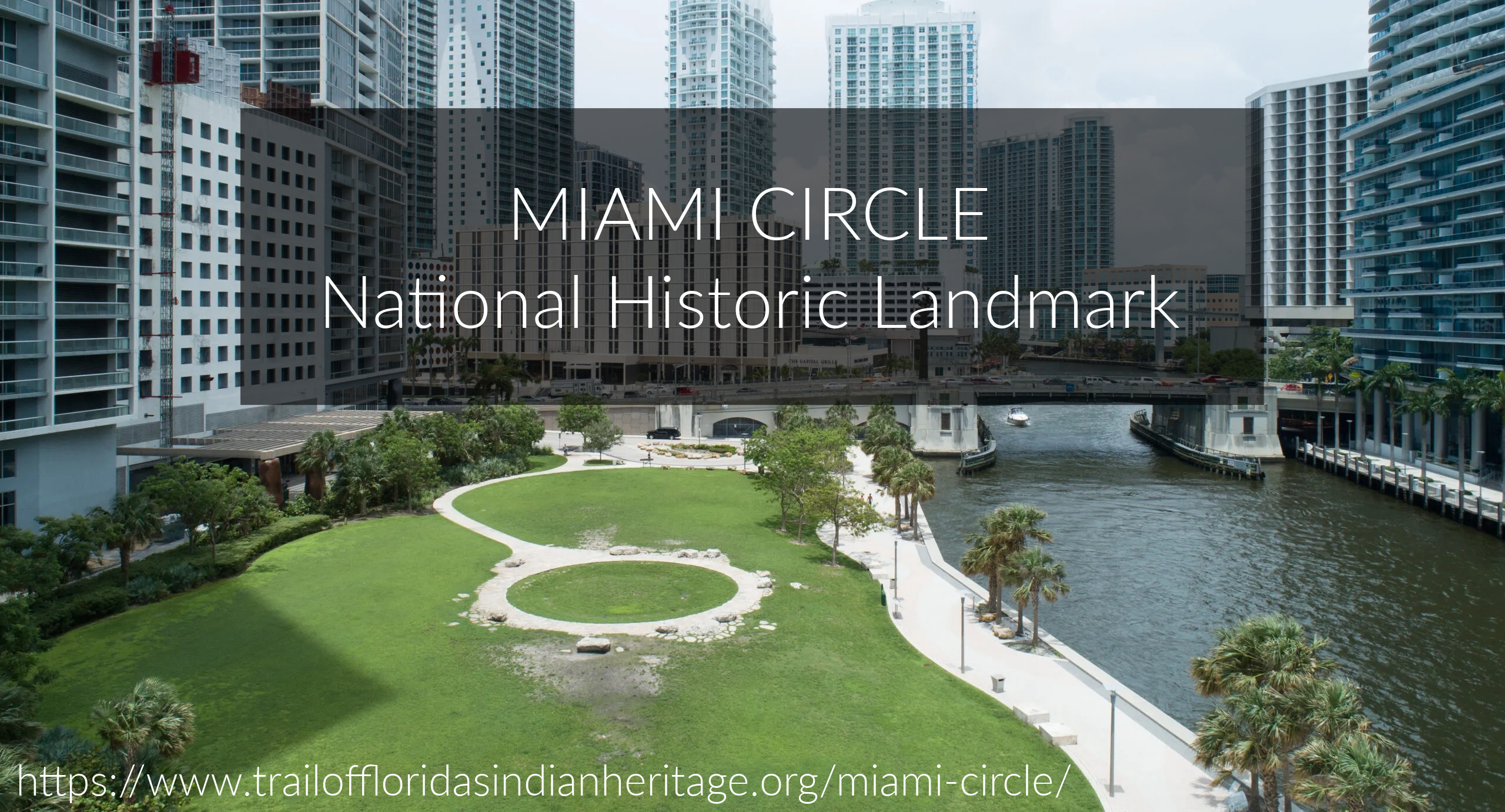
Miami Circle: Unearthing Centuries at Brickell’s Best-Kept Secret
I’ve been on a Miami history kick lately, so bear with me. You may have heard about the Miami Circle, maybe even visited the site, but do you REALLY know the backstory? Hidden in plain sight at the mouth of the Miami River, the Miami Circle has witnessed Miami’s wild ride from ancient sacred ground to swanky high-rises – now that’s real estate with a story to tell!
From Tequesta Turf to Tourist Trap
Long before Brickell had its high rises and traffic jams, it was home to the Tequesta Indians, who, let’s face it, probably enjoyed the waterfront views without worrying about rising rent or finding a parking spot. Fast forward a couple of millennia, and in 1998, during what was supposed to be just another day digging for another condo foundation, archaeologists hit the jackpot—a perfectly preserved circle carved into the bedrock. Yes, the Miami Circle isn’t just a clever name; it’s a literal circle, folks. I encourage you to visit this website for more information and videos: https://www.trailoffloridasindianheritage.org/miami-circle/
And you may want to read my piece on The Miami River for additional color and context.
Flagler’s Folly and the Royal Palm Hotel
Enter Henry Flagler, the man with a plan (and a railroad empire to boot), who decided that Miami needed a swanky spot for the 19th-century glitterati. Thus, he partnered with The Brickell Family to build the Royal Palm Hotel in 1897 right at Brickell Point. Luxury, leisure, and, oh—a rumor has it, some less-than-savory souvenirs. Legend says during construction, they unearthed ancient artifacts and remains which were then sold to tourists. Because nothing says “Welcome to Miami” like taking home a piece of its prehistoric residents, right?
The Brickells: Miami’s First Family of Real Estate
Not to be outdone by Flagler, the Brickell family—Miami’s OG landlords—were instrumental in shaping Miami’s urban landscape. They owned the land where the hotel was built and were key players in Miami’s transformation from a quiet outpost into a bustling urban center.
Post-Hotel Developments
After the Royal Palm Hotel met its demise (because hurricanes and economic depressions happen), the land saw several makeovers, including the Brickell Point Apartments. Fast forward to the late 90s, when the planned Icon Brickell threatened to erase the Miami Circle from history. But thanks to some quick action and a hefty check from the state, the site was saved from becoming just another skyscraper’s footnote.
Miami Circle Today: More Than Just a Pretty Park
Today, the Miami Circle stands as a testament to Miami’s layered history, from Tequesta ceremonies to real estate tycoons. It’s a cultural landmark where you can soak up some ancient vibes right in the shadow of modern luxury—because in Miami, the past never really leaves; it just waits to be rediscovered during the next construction project.
So, next time you’re in Brickell and stumble upon a curious circular arrangement of stones, take a moment. You’re standing on a site that’s witnessed more layers of history than many of Miami’s celebrated landmarks. Who needs a time machine when you’ve got Miami real estate?
The Curious Case of Missing History
And here’s my bit of cynicism – with all the high-end developments cropping up at the mouth of the river—a spot we know was prime real estate for the Tequesta—why aren’t we tripping over more archaeological treasures? Icon Brickell and Baccarat Residences have coughed up their secrets, but what about One Miami, Epic, or even Aston Martin? It’s almost as if in true Miami style, some histories are more conveniently buried than discovered. Are we just paving over the past, or are developers playing a game of ‘hide and don’t seek’? You decide.
